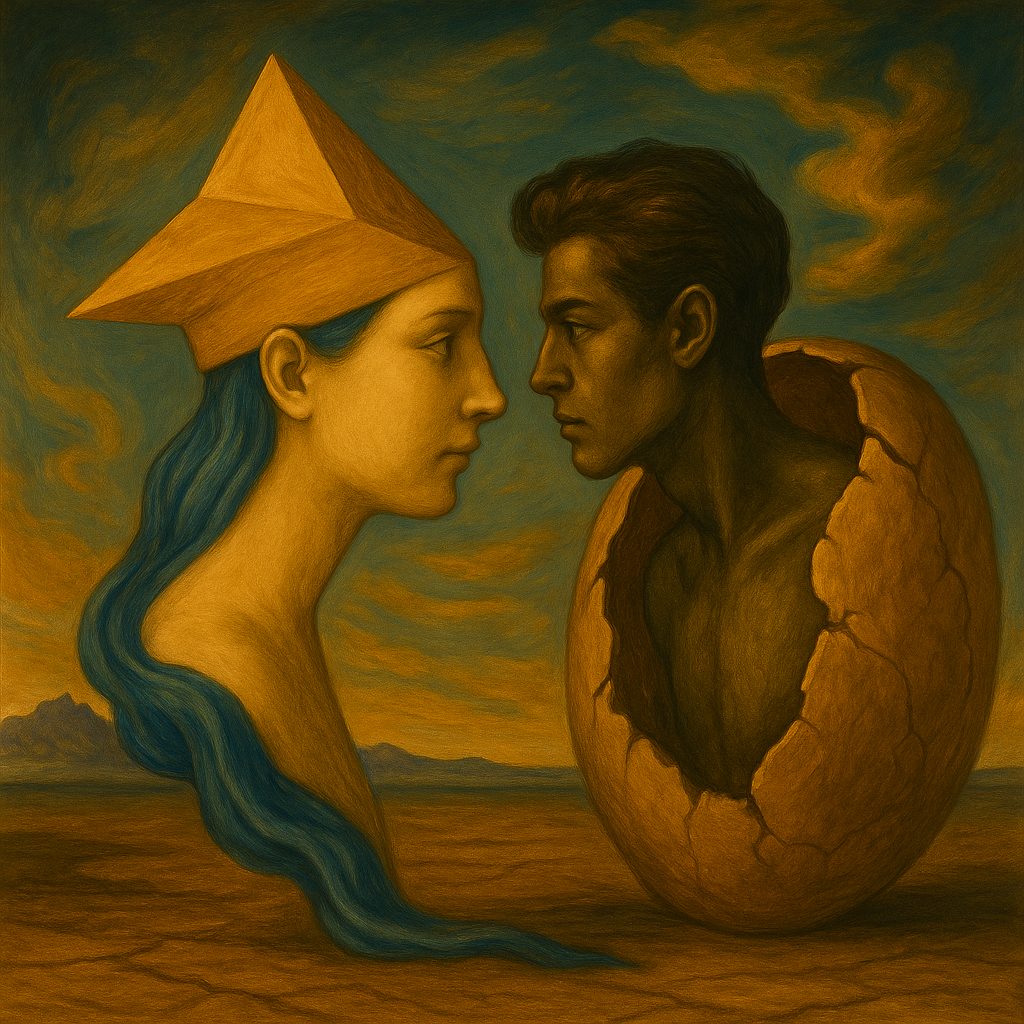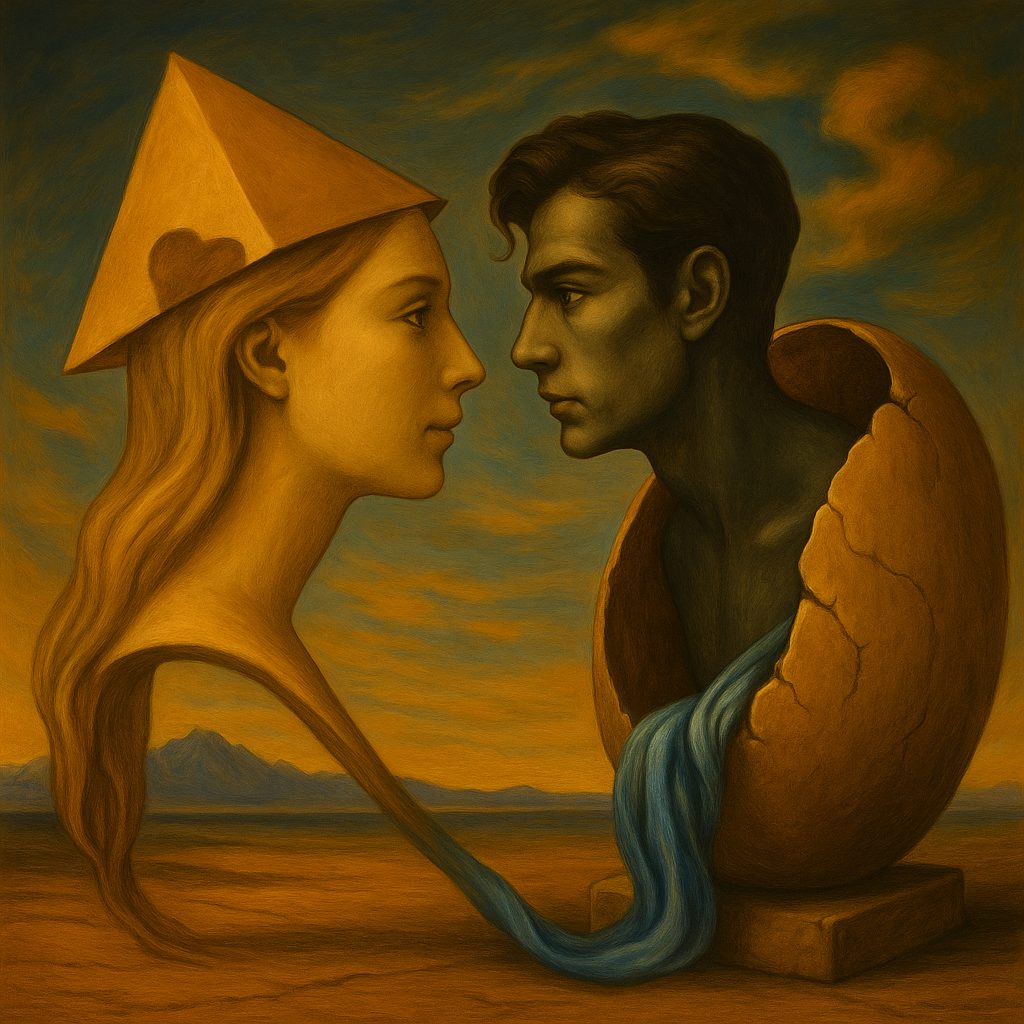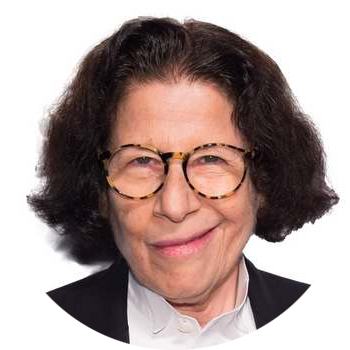In this article you will read about:
Introduction to the Anima & Animus Archetypes
In Jungian analytical psychology, the anima and animus are archetypes representing the inner feminine in men and the inner masculine in women. Together, they form the symbolic polarity of the psyche and serve as vital bridges between the ego and the unconscious (Jung, 1959). While these terms are often interpreted through a gendered lens, they actually reflect a broader psychological reality—the necessity of balancing opposites within the psyche. In contemporary terms, the anima/animus dimension can be understood as the inner polarity between receptivity and assertion, feeling and thinking, relatedness and autonomy (Hillman, 1985; Stein, 1998).
This article explores the nature and function of these archetypes. It introduces how the Archetypal Integration & Individuation Assessment (AIIA) measures their integration in individuals through symbolic scoring ranges, mapped across the individuation journey.
Origins and Symbolism of the Anima and Animus
According to Jung (1953), the psyche operates through a series of compensatory opposites. Conscious identity—the ego—tends to form around traits reinforced by culture, family, and gender expectations. In doing so, the opposing qualities are relegated to the unconscious, where they constellate as the anima or animus. Jung described the anima as the feminine archetype in the male psyche, often associated with emotion, intuition, receptivity, and eros (connection). The animus, by contrast, resides in the female psyche and is linked with will, logos (rationality), judgment, and inner authority (Jung, 1953, 1959).
These archetypes are not static or biologically determined. They evolve in complexity as the individual matures and may be shaped by culture, trauma, and personal development (Von Franz, 1998). In their unconscious forms, they are projected outward onto lovers, celebrities, ideological leaders, or spiritual figures, leading to emotional entanglements and distorted perceptions. In their integrated forms, they function as inner guides, mediating between instinct and spirit, emotion and reason.
archetypal integration & individuation phase |
Psychology
"It is an animus, she decides, the representation of the Logos in the female, as the anima is the representation of Eros in the male. In its negative aspect it is opinionated, conventional, banal, self-righteous, argumentative . . . In its positive aspect, it conveys spirit, feistiness, the capacity for reflection and self-knowledge, the capacity to handle philosophical and religious ideas at the higher levels."
Michael Gruber Tweet
Projection and the Challenge of Polarity
In early adulthood or prior to individuation work, the anima or animus often dominates via projection. For instance, a man might idealize women as nurturing saviors or erotic muses, while dissociating from his own vulnerability or sensitivity. Similarly, a woman might unconsciously project her unclaimed assertiveness onto men, perceiving them as controlling, intellectually superior, or emotionally unavailable (Von Franz, 1998; Stein, 1998).
This unconscious projection can lead to emotional volatility, romantic idealization, and interpersonal conflict. At times, it fuels infatuation, jealousy, dependency, or moralizing criticism. In the absence of conscious recognition, the inner Other hijacks the psyche’s relational and creative energies, generating psychological fragmentation.
Conversely, when integrated, the anima/animus becomes a psychic bridge to the Self. Emotional intelligence, creativity, moral reasoning, and relational depth increase. Jung (1959) considered the anima/animus to be “the archetype of life itself,” representing inner depth and potential transformation.
The AIIA Model: Mapping Inner Polarity
The Archetypal Integration & Individuation Assessment (AIIA) measures the individual’s conscious relationship to their inner polarity through a dedicated anima/animus dimension. Scoring does not reflect gender performance or binary expression, but the psychological integration of both masculine and feminine traits, such as logic and empathy, will and receptivity, inner authority, and emotional vulnerability.
Rather than positioning higher scores as “better,” the AIIA uses a four-level spectrum to reveal how the inner Other functions in the psyche at the time of assessment. This model acknowledges that integration is cyclical and non-linear, and that each level holds meaningful developmental insight.


The Inner Other Lives Outside of You
At this stage, the anima or animus is largely unconscious and externally projected. Individuals may experience intense emotional highs and lows in romantic relationships, often feeling "completed" or destroyed by partners who mirror disowned traits. Relational patterns are frequently reactive or dependent, and identity may feel tethered to validation or rejection from others.
Interpretation: Projection signifies a disowned vitality seeking recognition. Recognizing patterns of idealization or judgment in relationships is the first step toward reclaiming the inner Other.


The Inner Other Begins to Reveal Itself
The individual begins to witness their inner polarity through dreams, creative expression, conflict, or symbolic encounters. There may be increased emotional depth, psychic confusion, or sudden clarity in relationships. This stage is often disorienting but productive—it signals the beginning of inner dialogue and the retraction of projections.
Interpretation: Mid-range scores mark emotional and symbolic awareness. Reflective practice, therapy, and imagination become essential tools for integration.


Dialogue with the Inner Opposite
Here, the anima/animus is actively engaged. The person experiences greater inner fluidity between rational and intuitive knowing, between self-direction and empathy. Emotional reactions no longer dominate; instead, they provide guidance. Creative endeavors may flourish, as the internal partnership energizes expression.
Interpretation: At this level, polarity becomes dialogue. The individual is learning to “think with the heart and feel with the mind”—a hallmark of psychological maturity.


The Inner Polarity Becomes a Power Source
The individual has internalized the anima/animus as a functional, symbolic partner. Polarity transforms into synergy—masculine and feminine principles coexist in creative tension. Relationships are grounded, not idealized. The voice of the inner Other now supports discernment, empathy, originality, and Self-realization.
Interpretation: High scores here suggest inner alignment. This level often coincides with mentorship, artistic vision, or relational wholeness.
Theoretical Correlations with Established Models
The Anima/Animus dimension assesses one’s relationship to the internal contra-sexual archetype, representing emotional polarity, creative inspiration, and the capacity for symbolic wholeness through symbolic integration of the “inner other”. In Jung’s framework, these figures often mediate between the ego and the unconscious, especially during emotional or relational activation(Jung, 1953; von Franz, 1998). A low score may indicate active projection, infatuation, or inner conflict related to gender dynamics or relational expectations. Higher scores suggest a growing capacity to internalize this polarity, cultivating emotional intelligence, symbolic thinking, and depth in interpersonal relationships.
Anima/Animus and Emotional Intelligence, Gender Schema, and Attachment
The Anima/Animus dimension aligns closely with emotional intelligence (Mayer, Salovey, & Caruso, 2008), gender schema theory (Bem, 1981), and attachment theory (Bowlby, 1988). A fragmented or projected inner polarity—manifesting as romantic idealization, emotional volatility, or rigidity in gender expectations—has analogs in anxious attachment patterns and stereotypical gender role adherence. Conversely, integration of inner polarity appears to correlate with higher relational maturity, creative expression, and symbolic fluency—qualities associated with advanced ego development stages (Cook-Greuter, 2005).
While the AIIA emerges from symbolic psychology, several of its constructs align meaningfully with validated dimensions in modern personality research:
| AIIA Dimension | Corresponding Concepts in Scientific Psychology |
|---|---|
| Shadow | Neuroticism (Big Five), Repression, Projection (Freudian defense mechanisms) |
| Anima/Animus | Emotional intelligence, Attachment style, Gender schema theory |
| Persona | Social desirability bias, Self-monitoring, Identity status (Marcia, 1980) |
| Inner Sage | Wisdom (Ardelt, 2003), Reflective functioning, Metacognition |
| Self | Self-actualization (Maslow, 1968), Ego integrity (Erikson, 1982), Self-determination theory (Deci & Ryan, 2000) |
| Growth Edge | Readiness for change (Prochaska et al., 1992), Self-directed learning, Transformational learning theory (Mezirow, 2000) |
Psychological and Therapeutic Implications
Modern psychological research affirms the significance of polarity integration. Studies on gender role flexibility, emotional intelligence, and internalized empathy all reflect the value of integrating “masculine” and “feminine” traits (Bem, 1981; Norsworthy & Malone, 2020). For example, individuals high in androgynous traits tend to report better relational outcomes, greater life satisfaction, and lower emotional reactivity (Vafaei et al., 2016).
Therapeutically, engaging with the inner Other supports individuation by transforming dependency into self-sufficiency and fantasy into symbolic understanding. As Hillman (1985) wrote, “The soul requires a counterpart… an image of the opposite through which it sees itself.” Tools such as dreamwork, active imagination, and reflective journaling help individuals establish this inner relationship.
Conclusion
The anima and animus archetypes represent one of the most dynamic and essential processes of psychic development: the return of the disowned Other. Through symbolic encounter and integration, the individual no longer seeks completion through another, but becomes whole within themselves. In this way, the anima and animus not only shape romantic and interpersonal dynamics—they serve as pathways to the Self.
The AIIA’s inner polarity dimension offers a rare opportunity to assess where the individual stands in this developmental journey and provides practical, symbolic guidance for ongoing integration. Whether one is in the throes of projection, awakening to deeper emotions, balancing contradictions, or expressing a unified vision, the goal remains the same: to evolve toward a consciousness that is not split, but whole.
The Anima & Animus Archetypes Book Recommendations
Here is a collection of the best books on the market related to The Anima & Animus Acrhetypes:
Our commitment to you
Our team takes pride in crafting informative and well-researched articles and resources for our readers.
We believe in making academic writing accessible and engaging for everyone, which is why we take great care in curating only the most reliable and verifiable sources of knowledge. By presenting complex concepts in a simplified and concise manner, we hope to make learning an enjoyable experience that can leave a lasting impact on our readers.
Additionally, we strive to make our articles visually appealing and aesthetically pleasing, using different design elements and techniques to enhance the reader’s experience. We firmly believe that the way in which information is presented can have a significant impact on how well it is understood and retained, and we take this responsibility seriously.
Click on the icon to see all your thoughts in the Dashboard.
Your Thoughts about the Anima & Animus Archetypes
It’s highly recommended that you jot down any ideas or reflections that come to mind regarding all-or-nothing-thinking, including related behaviours, emotions, situations, or other associations you may make. This way, you can refer back to them on your Dashboard or Reflect pop-ups, compare them with your current behaviours, and make any necessary adjustments to keep evolving. Learn more about this feature and how it can benefit you.
References
- Bem, S. L. (1981). Gender schema theory: A cognitive account of sex typing. Psychological Review, 88(4), 354–364.
- Bowlby, J. (1988). A secure base: Parent-child attachment and healthy human development. Basic Books.
- Cook-Greuter, S. R. (2005). Ego development: Nine levels of increasing embrace. Unpublished manuscript, The Graduate School of Leadership Studies, Fielding Graduate University.
- Deci, E. L., & Ryan, R. M. (2000). The “what” and “why” of goal pursuits: Human needs and the self-determination of behavior. Psychological Inquiry, 11(4), 227–268.
- Erikson, E. H. (1982). The life cycle completed. Norton.
- Hillman, J. (1985). Anima: An anatomy of a personified notion. Spring Publications.
- Jung, C. G. (1953). Collected Works of C.G. Jung, Volume 7: Two Essays on Analytical Psychology (R. F. C. Hull, Trans.). Princeton University Press.
- Jung, C. G. (1959). Collected Works of C.G. Jung, Volume 9, Part 2: Aion: Researches into the Phenomenology of the Self (R. F. C. Hull, Trans.). Princeton University Press.
- Jung, C. G. (1969). Collected Works of C.G. Jung, Volume 8: The Structure and Dynamics of the Psyche (R. F. C. Hull, Trans.). Princeton University Press.
- Maslow, A. H. (1968). Toward a psychology of being (2nd ed.). Van Nostrand Reinhold.
- Mayer, J. D., Salovey, P., & Caruso, D. R. (2008). Emotional intelligence: New ability or eclectic traits? American Psychologist, 63(6), 503–517.
- Mezirow, J. (2000). Learning as transformation: Critical perspectives on a theory in progress. Jossey-Bass.
- Norsworthy, K. L., & Malone, C. M. (2020). Fluid identities and transcending binaries: Toward integrative gender frameworks. Journal of Counseling & Development, 98(2), 150–159.
- Prochaska, J. O., DiClemente, C. C., & Norcross, J. C. (1992). In search of how people change. American Psychologist, 47(9), 1102–1114.
- Stein, M. (1998). Jung’s map of the soul: An introduction. Open Court Publishing.
- Vafaei, A., Alvarado, B. E., Curcio, C. L., & Phillips, S. P. (2016). Gender differences in cognitive performance among older adults: Exploring the role of social determinants. Journal of Aging and Health, 28(7), 1224–1242.
- Von Franz, M.-L. (1998). The interpretation of fairy tales. Shambhala Publications.




